
Joints are like an after-school program for cracks in concrete. If we fail to provide a place for cracks to occur safely, under supervision, and in aesthetically pleasing configurations, we as a society will be faced with complete anarchy in our walls and slabs. This horrifying chaos could lead to unwed, underage cracks begetting more cracks and, possibly even more alarming, cracks on crack.
Sometimes, despite the provision of joints and reinforcing in concrete to resist tension, construction goes horribly wrong. Say the mix is off, or the wrong strength is used by mistake, or perhaps …
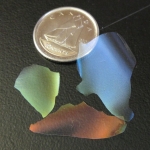
Not too long ago, a group of researchers at the University of British Columbia (namely associate professor of chemistry Mark MacLachlan, PhD student Kevin Shopsowitz, post-doctoral fellow Hao Qi, and one Wadood Hamad of FPInnovations) were working to create a material that could be used to store hydrogen. From what I hear, British Columbia is a heavily forested part of the world, and the researchers wanted to derive the new material from a byproduct of the local wood processing industry, nanocrystalline cellulose.
Nanocrystalline cellulose, a “building block” of wood pulp, is organized in a helical structure …
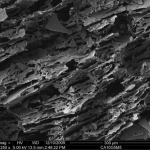
If I were about to be shot from a cannon like one of those people at the circus who are routinely shot from cannons, I’d wear a sumo-sized foam suit and I’d also demand that the spot where I’d expect to land would be covered in fluffy chunks of foam as well. I’d want foam strewn pretty much everywhere to absorb the force of my impact because I don’t enjoy the prospect of danger. I guess that’s why I’m not a circus performer. Let’s face it: people wouldn’t exactly be thrilled watching someone being shot from …
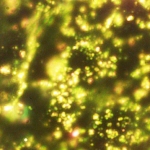
Remember King Midas from Greek mythology? Everything he touched turned to gold. At first this was completely awesome and Midas ran around excitedly touching pots, spoons and incidental house cats, turning them all into gold so that he’d be able to trade the newly be-goldened objects for other things he wanted, like a quart of the very best EVOO or a deluxe chariot with side-impact airbags. But Midas soon realized, much to his chagrin, that turning everything he touched into gold made simple actions like eating, hugging his significant other, or putting on a clean tunic highly problematic.
Image courtesy pakrockerx.com
I was reminded of the …
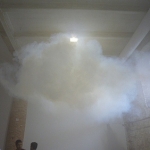
Water. The universal solvent. H2O.
It’s refreshing and highly necessary, but water in the wrong place at the wrong time can cause catastrophic problems in buildings. It’s easy to envision the kind of damage inflicted by a flood, or by ten feet of snow on a roof designed to support six, or even by corrosion caused by salty ocean water at the seashore. But the reason we wrap our buildings in fancy hi-tech paper and smear them with liquid waterproofing has more to do with the insidious effects of water vapor and intra-wall condensation. …

Think of public restrooms as the Arctic expedition, Sahara desert traverse, or trek through the Amazon of architecture; the public restroom is one of those extreme environments where you plan for the worst and hope for the best. Your typical public toilet faces all possible byproducts of humankind, harsh chemical cleaners, random acts of vandalism, water, fungus, insects, rodents, and the full spectrum of microorganisms. Ceramic materials are specified in public restrooms because smooth glazed surfaces are easier to keep clean and damaged tiles can be replaced without too much trouble, but the chemicals required to sanitize public …
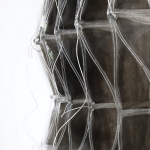
I like, kind of have a massive crush on architecture robots. In my spare time I doodle the names of various smoking hot robots in a three-hole punched college-ruled notebook that I store in my TrapperKeeper. And like, every time I see one (a robot, not a TrapperKeeper) I completely freak out and start hysterically screaming, hyperventilating, and crying. Picture the reaction of a typical teenage girl as The Beatles were getting off the airplane in 1964. But to be perfectly clear – I don’t care about robots that are not architecture robots. For instance, I don’t give a semi-ripe fig about the Transformers or …
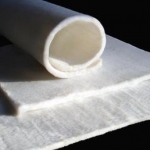
Does anyone else remember the Muppet Show skit called “PIGS IN SPACE“? Actually, it was called “PIIIIIIIIIIIIIIIIIGSSSS IIIIINNNNNNN SPAAAAAAAAAAAAACE,” mainly because in outer space distances are vast and despite the fact that sound doesn’t travel through a vacuum, all announcements about astronaut pigs really should be made with excessive reverb. I don’t really have any more time to go on about the pigs but I bring them up because they are hilarious and because they were the first thing I thought of when I heard about Cellulose Aerogel, which is the material I’m about to describe in excruciating detail over the course …

Context changes how we perceive materials. For example, if you were to examine a carpet from a distance of 1.5″ (as you might do if you’d tripped on up the stairs and upon landing found yourself face to face with the ground) the experience would be completely different than if you were to view it from 5′-6″ feet away (as you might do if you were walking around in a competent manner). Close up, you’d see the loops and fibers that make up the carpet, and you might be able …
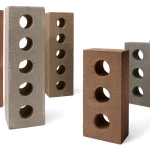
When I first heard the term “fly ash” in architecture school, I remember thinking that it sounded pretty sick. I mean, flies are annoying and it’s gross when they buzz over and land first on some unidentified, dog-generated substance on the ground and then, without a single shred of consideration, approach and settle on the rim of your drinking cup or slice of pecan pie. But it boggles the mind to think about the enormous number of flies you’d have to crisp in order to produce so many metric tons of fly ash that there’d even …
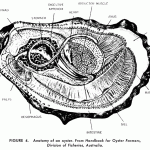
Never have I felt even the slightest desire to slurp down an oyster. Not once have I looked said bivalve in the eye*, so to speak, and been able to overcome my not inconsiderable revulsion long enough to taste one. It seems however, that I’m in the minority; many of my dearest friends are completely mad for oysters and eat them in copious quantities whenever they can get their hands on them.
I bring this up because tasting good (to other people, at least) is a positive characteristic of oysters. Another positive …

Generally speaking, architecture is kind of a big deal. What I mean is that architecture is large in size; it accomodates enormous objects like people, cars, eighteen-wheelers, and the occasional overfed cat. The Burj Khalifa in Dubai, for example, is 2,717 feet tall; that’s just over half a mile by my calculations. (I’ve seen entire hills shorter than the Burj Khalifa). But the thing about BIG things is that they tend to result from organized aggregation of small things. And so today I’d like to take a moment to explore the implications of the recent development of some really really ridiculously tiny …

Architects are visual people by and large, and we don’t like clutter or disorganization unless it’s a very carefully ordered chaos within acceptable parameters. (If you disagree with this broad generalization please feel free to express yourself with wild abandon in the comments section – it is the perfect forum for dissent). Anyhoozle, I’m bringing this up because a lot of the product data we look at when assessing different building materials that get specified for projects makes my head hurt. The brochures tend to be tacky, poorly organized, and …

Sometimes human beings want to go to outer-space, or into a volcano, or all the way to the bottom of the sea. The problem is that human beings are not particularly adapted to these environments, and without a lot of really intensive preparation and fancy gear, they will die spectacularly on arrival (if not before). Robots designed to survive in these horrible places can go in our stead, and send back useful information about conditions there. But it’s hard to create a robot that can survive adverse conditions and still respond to them like a human being …

Life is funny sometimes. Just yesterday I was talking to a coworker about this crazy book I’m reading that I may have mentioned in a previous post called The Singularity is Near by Ray Kurzweil, in which the author posits that we are moving towards a world where our technology and biology fuse to become indistinguishable, and now today I’m writing about solar cells powered by bioluminescent jellyfish. Let me also say that I’d much rather write about jellyfish than swim with them; they navigate the sea in creepy pulsing motions and some of them …
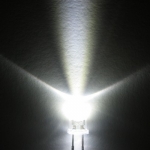
It’s hard to compete with the luminous output of a ball of hydrogen and helium gas 864300 miles in diameter, but it should be noted that sunlight is not without its drawbacks. It’s nearly impossible to use at night, and the quality of light is affected by everything from cloud cover to latitude. Fire works indoors and at night for light, but it’s not very bright, often rather smoky, and could potentially rage out of control and destroy one’s house. Incandescent light bulbs use too much electricity and put out a kind of yellow …

My apologies to bird lovers, but it can’t be denied that our feathered friends are somewhat lacking in gray matter. To put it bluntly: birds are dumb. They’re good at certain things like flying and pecking and saying “ca-caw!” but they have tiny brains. The reason this becomes important in an architectural context is that you can’t reason with a bird. You can’t say, “hey, maybe you should think about the fact that a lot of the openings you’re trying to fly into are actually filled with glass, and when you …